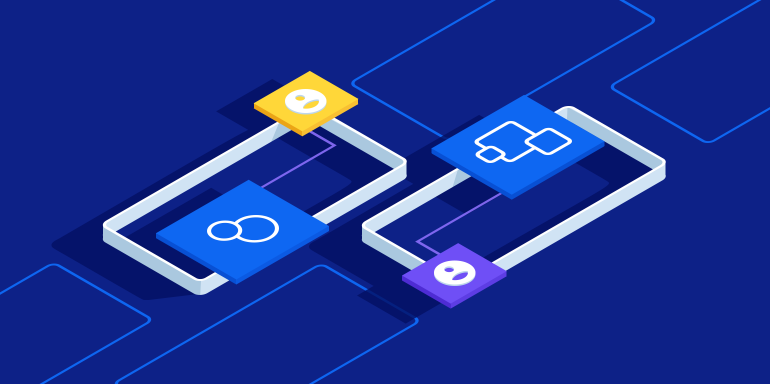It is widely known that personalization is key to any marketing campaign because it puts the consumer at the center of your advertising experience. By identifying and targeting specific, relevant audiences — and delivering them individualized experiences — your campaigns become much more effective.
Mobile is no exception to this. Today’s mobile users expect relevant offers and fully personalized experiences, exactly when they want them. For that reason, mobile marketers must move beyond mass segmentation and into mobile personalization.
What is mobile personalization and why is it necessary for marketers?
Mobile personalization is the process of employing user-specific data (demographics, interests, behaviors, life stage, location, time, etc.) as deep insight for enhancing and customizing marketing messages across mobile devices. It enables advertisers to build deeper relationships with users and treat them as actual people instead of just paying customers.
In this example, Pinterest takes what it already knows about its individual users, and provides them with personalized Pin suggestions via push notification:
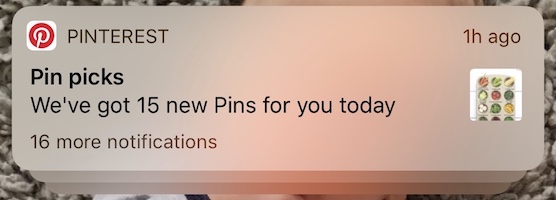
Why does this type of personalization matter? Across all industries, more than half of users stop using a mobile app just one month after downloading it. After three months, the average mobile app retention rate drops to only 29%:
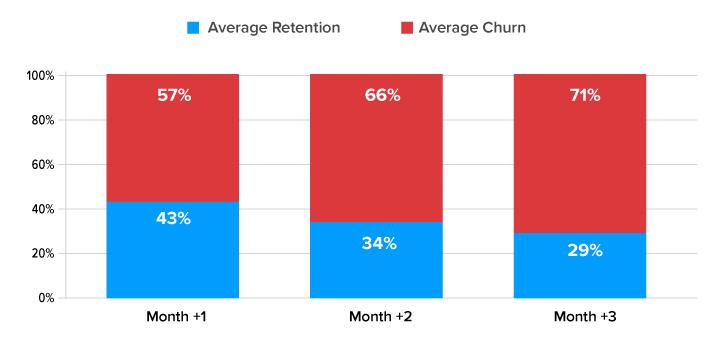
A major factor of this churn is the lack of personalization, which means mobile personalization is often the difference between losing and retaining customers.
What’s more is that personalized push notifications have helped generate 800% higher open rate than generalized push notifications sent to the masses.
By personalizing content and communication at every point through the customer journey, however, mobile marketers can increase engagement, retention, and revenue.
How does mobile marketing personalization work?
It all starts with a deep understanding of your customers by gathering consumer data (demographics, location, in-app behaviors, preferences, etc.). This data is applied to create user profiles, and the profiles then serve as a basis for customer segmentation. All of this allows you to send highly-targeted advertising messages to each individual.
As with any personalization, there are different levels of personalization through mobile. Possibly the most basic is including a user’s name in a message, or even syncing the message with their local time to send it at the most appropriate time:
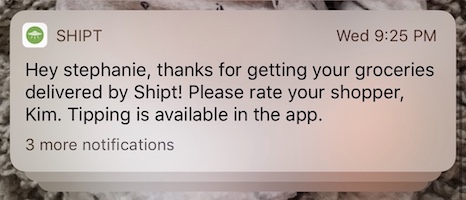
More advanced techniques involve drawing conclusions from consumer data, to develop a complete picture of what the user wants or needs. Rather than merely using location to send a message at the right time of day, hyper-personalization uses location to look into what is currently happening in that area as well (weather, events, celebrations, etc.).
Moving into this level and offering a more connected experience helps turn casual mobile users into active and engaged participants.
For more on the evolution of advertising personalization — and to learn how to implement personalization at every funnel stage — download the Digital Personalization Guide.
How can advertisers use mobile personalization in campaigns?
Integrate mobile messaging with email
Consumers today expect a personalized, multichannel brand experience, so combining email and mobile messaging is a natural fit. It allows you to better engage with customers across more touchpoints to deliver campaigns that are:
- Relevant — 44% of text message subscribers opt out of future messages when the messages are irrelevant to them.
- Timely — Mobile messaging allows you to connect with customers at a much quicker pace than almost all other channels.
- Valuable — By augmenting your email database with a mobile phone number database, you can double the ways to reach and engage your most valuable customers.
Integrating email and mobile messaging can be done by pairing SMS with various email personalization software or mobile wallet:
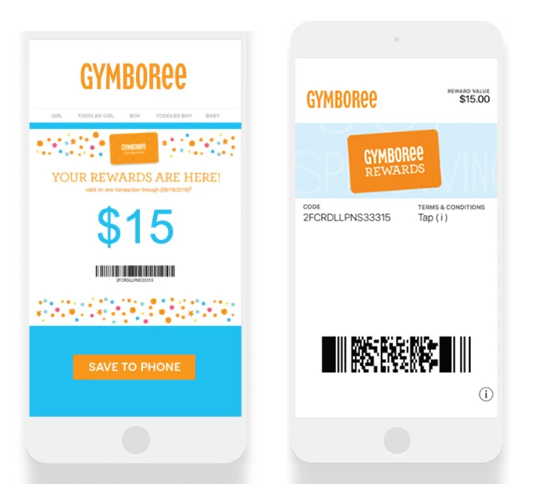
Modernize loyalty programs
72% of today’s customers would rather save a digital loyalty card to their phone, than carry around a plastic card or paper coupons because mobile cards allow them quicker and easier access to offers and coupons.
With deep insight into customer behaviors and preferences, you can optimize your mobile loyalty program with:
- Frictionless enrollment — Rather than scrambling for customers’ contact information, brands can leverage mobile wallets to drive instant loyalty program sign ups. When customers pay by mobile wallet, their personal information is automatically transferred into a profile for a frictionless loyalty program enrollment:
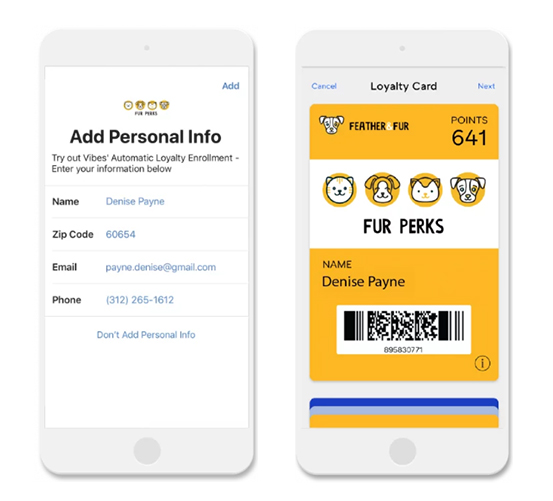
- Real-time access — By incorporating mobile personalization into your loyalty program, members can access and track loyalty points, member status, and important offers and information in real time.
- Relevant notifications — Loyalty program enrollment can be used as a foundation for personalized messaging and notifications that make customers feel rewarded and appreciated.
This type of retail mobile personalization ultimately increases redemption rates, conversion rates, customer retention, and customer spend.
Engage proactively throughout the entire journey
Whether customers need a reason to visit your store, or are already waiting in line, you can really bring your brand to life with engaging and fun mobile-first campaigns through SMS, mobile wallet, and/or push. For example, text loyal customers a message to take a quiz or play a mobile game to win an in-store offer and keep your brand top of mind:
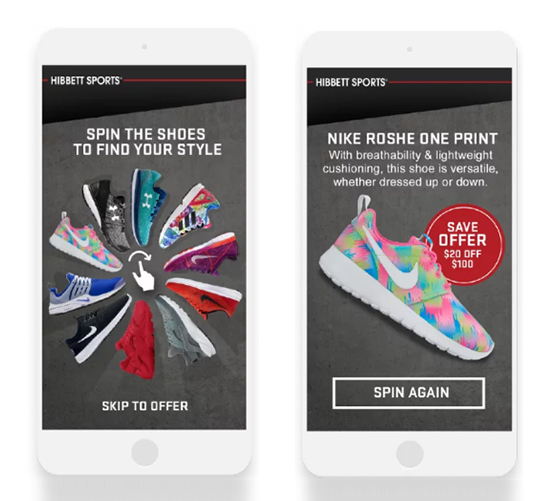
Or send them a push notification to play a game while waiting in line in your store to drive long-term customer relationships and increase revenue.
You can also deliver continuous pieces of value across the entire customer journey:
- Wallet reminders that loyalty points are about to expire
- Promotion alerts through SMS, email, push, etc.
- An SMS offer that inspires someone to visit your physical storefront
- Shipment confirmations and order status updates
- Promotions for cart abandonments
- Appointment reminders
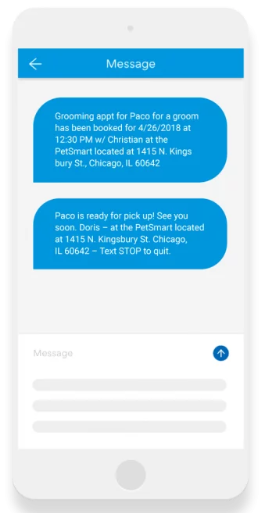
By using a multichannel strategy that focuses on mobile personalization, you can engage with customers before, during, and after their purchase. This creates a better customer experience, builds a deeper customer-brand relationship, and boosts traffic and sales.
Deliver a mobile experience that matters
We have our mobile devices with us at all times, checking them countless times each day; so naturally, mobile is the most personal of devices. This provides a window into users’ behaviors and preferences, and an opportunity for brands to develop a complete picture of their customers.
Use this picture and real-time data to gain a deep understanding of your customer’s wants and needs, and then deliver perfectly tailored mobile campaigns. Your conversion and retention rates will thank you.
